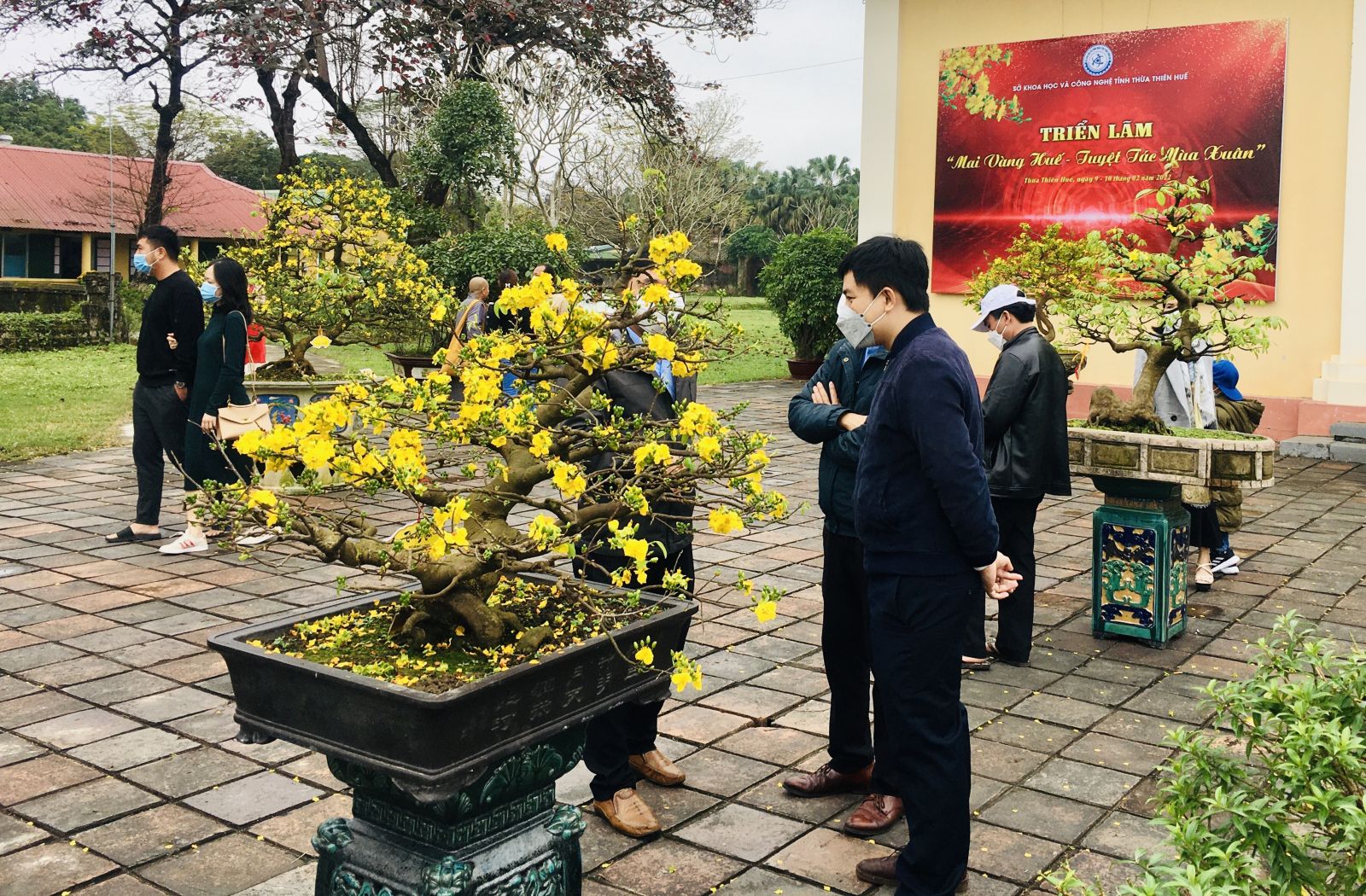
Hue yellow apricot (Hoang mai i.e., Ochna integerrima) is a famous flowering tree of Hue. Photo: QT
It is interesting that she used the phrase “the city of yellow apricot blossoms” to refer to Hue. It shows that she has kept up with the city changes quite well. Along with many affectionate names such as heritage city, Festival city, green city, culinary city, the city of ao-dai, the city is now on the point of having a new name – a geographical name and brand closely tied to the key word of “yellow apricot blossoms”.
Mr. Dang Ngoc Quy, Deputy Director of the Green Park Center, spent much time talking about the apricot blossoms in a talk with us about green trees for Hue on the threshold of the year of Water Tiger 2022.
It was started in 2000 with a city leader’s idea to turn Hue into the city of yellow apricot blossoms. Yellow apricot blossoms have been incubated, planted, and cared to form a beautiful garden of yellow apricot blossoms opposite the Citadel, and make a spotlight of Hue with rows of apricot blossoms along Le Duan street.
Another garden of yellow apricot blossoms has recently been shaped along the August 23rd street in the Imperial area. It has become a destination in the bucket list of tourists during Tet holiday.
Together with the movement Yellow Apricot Blossoms at the Front Gate, the traditional flower of Hue, yellow apricot blossoms, have been planted in many households. Their bright blossoms have left a special impression on the front yard, the communal yard and ancient pagoda surroundings.
A conference of preservation and development of yellow apricot blossoms in Hue were held by the provincial Department of Science and Technology after Tet. Beyond the idea of planting apricot blossoms for decoration purposes, it was suggested at the conference that yellow apricot blossoms should be developed into a brand name, making this kind of flower a cultural product for business. The long-term goal is to construct Hue into a land of yellow apricot blossoms of Vietnam.
Although there have not been practical statistics, apricot blossoms are currently planted in many localities such as the districts of Phong Dien, Phu Vang and Phu Loc, and the outskirt area of Hue, remarkably contributing to the locals’ incomes, according to Dr. Tran Dinh Hang, Director of VICAS Hue branch.
In the village of Eastern The Chi (Dien Hoa, Phong Dien) in particular, there are now 30% of the households making their living from apricot blossom bonsai. The whole commune has around 5,000 yellow apricot blossom trees with prices ranging from 10 million to hundreds of million dong for each.
Also at the conference, a question arising was whether or not the yellow apricot blossom would turn into the icon of Hue as they are with Dutch tulips, Japanese cherry blossoms and Bulgarian roses.
While many issues were under discussion related to the preservation and promotion of Hue yellow apricot blossoms, including the process of preserving genetic resources, the propagation and the designs of garden and planting areas, tourism specialists believed that this kind of flower would possibly become a well-known brand and a culture-specific tourist product to contribute to economic development, given the proper investment.
This reminds me of a talk with the owner of Di Nhien teahouse a few years ago. While presenting a special apricot marinated tea, she said that she wished to have a big garden of apricot blossoms for tourists to check in and enjoy apricot marinated tea, and accordingly promoting and exporting products from apricot blossoms via tourism.
It was one of the idea of exploiting the potential heritage values of Hue yellow apricot blossoms.
By NHAT NGUYEN
